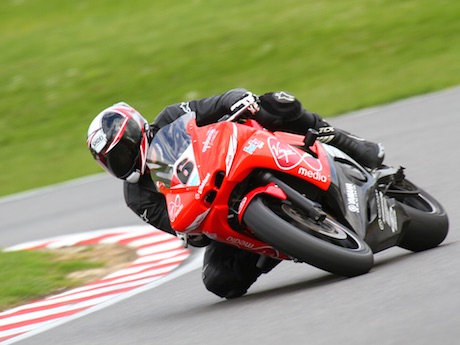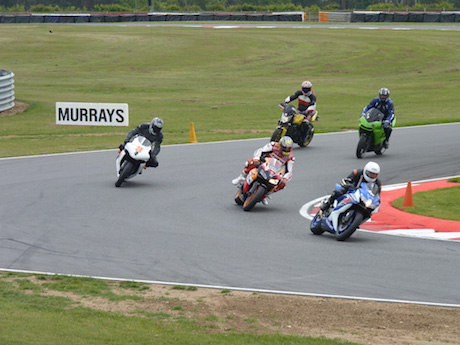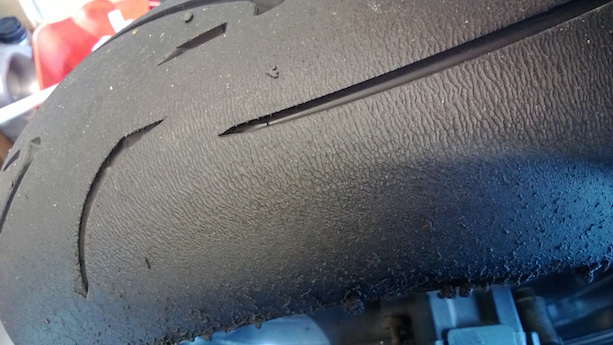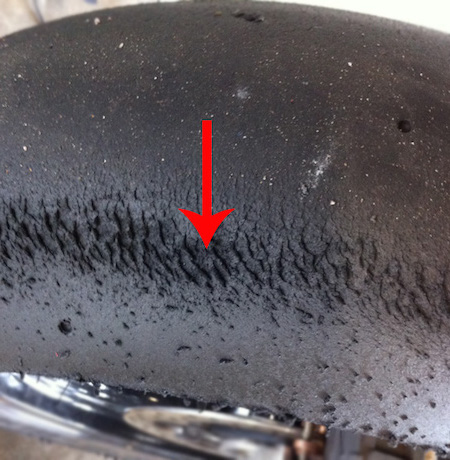One of the most commonly asked rider questions is “what tyre pressures should I run for [insert bike and tyre make here]?”.
British blogger Dan, who writes the popular Bike Track Days Hub, is here to answer that question:

Having the right pressure for your rider, bike and tyre combination is very important to getting the most out of your tyres both in terms of performance and longevity.
The trouble is there is no one magical pressure for one type of motorcycle or type of tyre, and as you’re about to find out there are times when you would even use different pressures for the same tyre on the same bike!
So to help you understand what actually goes into determining the best pressure for you, here’s a look at some of the things that affect tyre pressure.
Things that affect tyre pressure
Weight – A pressure that works for a 60kg won’t necessarily work for a person weighing considerably more than that.
Tyre Construction – Some tyres have harder carcasses and sidewalls which mean they don’t need to run as high a pressure as a tyre with a soft carcass.
Ambient Temperature – The outside temperature is going to affect how your tyres heat up. Setting your rear to 30psi on a cold day isn’t going to give you the same performance as setting it at the same pressure on a baking hot day, because on a hot day the tyre will heat up quicker and by more.
Hot and Cold Pressures – If you set your pressure to 30psi when the tyre is cold, this isn’t going to be the same as setting them to 30psi when the tyre is hot (a cold tyre will gain around 2-6psi through use).
Road vs Track Tyres – Road tyres are typically designed to run at higher pressures than track tyres because they are not expected to heat up as much, and some track tyres have a stiffer construction.
As you can see, there are many factors that come into finding the best tyre pressure for your bike and tyre combination.
How can I find my best pressure?
What you want first is a good baseline pressure which you should be able to get from any of the below sources.
Manufacturer – Go direct to the manufacturer and get the pressures they recommend, you can usually find them on their website. If not, email them and ask what they would recommend setting tyre ‘X’ to for use on the track.
Tyre Expert – Speak to the tyre supplier at the track, or talk to someone you know who deals with tyres and setting up bikes for the track.
Other riders – See what other riders with similar setups are doing with the same tyres. They too would have gone through the same process to find the best pressures for themselves.
Test, Monitor, Test, Monitor
Once you have your base pressure, try it out and see how you get on. Did you notice any unsavoury reactions from the tyre that wasn’t there before?
Or the more common issue, is the tyre showing any signs of unnatural wear? If you answer yes to these questions then it could well be that your pressure is not quite correct.




